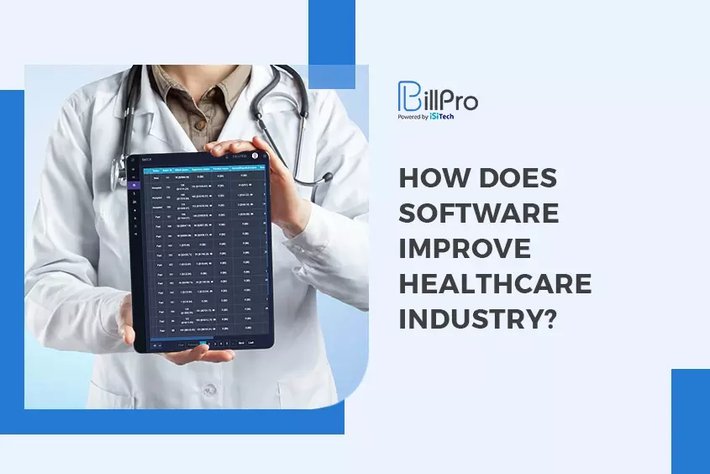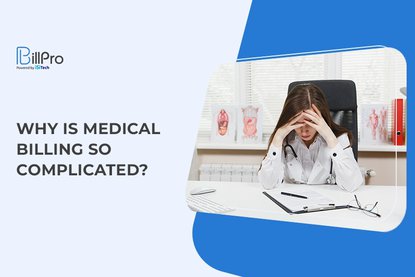Hospitals, clinics, and other health facilities are implementing technologies, such as medical software, into their routine work. This helps them simplify complex and detailed processes. These are the top 10 tools and types of healthcare software that can optimize your processes.
You have likely seen numerous examples of how the latest digital innovations and solutions are successfully integrated into the US healthcare industry. These solutions include:
-
Electronic health records
-
Patient scheduling systems
-
Sophisticated technologies for complicated surgeries.
After the COVID-19 pandemic, hospitals, clinics, and medical services have resorted to technological solutions to do the following:
-
Facilitate diagnosis
-
Improve treatment
-
Enhance patient management and satisfaction
This has helped prove how game-changing and influential medical software and billing solutions are for the US healthcare sector.
How Could Software Streamline and Improve Healthcare?
Administrative expenses make up about $360 billion yearly for governmental healthcare agencies, medical practices, and insurance providers. Note that billing-related activities and functions account for a big part of these expenses.
However, with the advancement of medical billing and custom software solutions, it is possible to reduce expenses and streamline operations. Now you can perform many tasks efficiently. Some of these activities are patient screening and remote monitoring.
EHR software and Medicaid billing solutions, such as NYBillPro, improve the self-care experience. They also lower the burden on the health system in the country.
For example, medical billing software solutions enable doctors and health practitioners to manage claims more effectively. Using these software platforms, you can streamline your operations and boost efficiencies. A higher volume of medical claims helps keep revenue flowing consistently.
Medical billing software can help. This is because they minimize billing errors and mistakes, allowing a higher volume of claims. These solutions also ensure that claims are filed on time.
Integrating software into your existing health operations will also improve profitability. This is possible through faster and more efficient claim processing.
Some other benefits of healthcare software include:
-
Seamlessly manages all processes in clinics and hospitals
-
Offers communication tools and platforms for healthcare organizations
-
Slashes costs by automating and optimizing processes
-
Enhances diagnostics and quality and reliability of healthcare services
Benefits for Patients
The implementation of medical billing and custom healthcare software brings value for hospitals, clinics, and medical workers. However, it also benefits patients in many ways. For example, these solutions provide patients with better medical services while interacting with health institutions. They also leave an excellent overall impression afterward.
Better Communication
Note that electronic billing solutions allow health providers to communicate better and more proactively. Another benefit is that patients can quickly receive their medical bills on their mobile devices. Also, many customer relationship platforms offer customers the option to pay their bills with one click. You can work with reputable healthcare software companies to develop software that meets your needs. Learn how you can find a reliable and reputable software developer.
More Transparency
More than 70% of patients claim they are confused and puzzled by their explanation of medical benefits. Also, 70% are confused about and don’t understand their medical bills. Keep in mind that your CRM platform should allow patients to receive more in-depth information regarding their payment options and bills. They can also access various payment plans.
Improves Brand Perception
Medical practices that offer more digital interactions are usually seen as more efficient and transparent, especially by young patients. And this perception is vital for attracting and retaining new patients and improving your bottom line. Find some tips for creating the perfect healthcare software for your practice.
Benefits for Health Organizations and Doctors
Time-Saving
With medical software, patients don’t have to call and coordinate their appointments with your office staff, so your medical staff can focus on more crucial functions and tasks.
Better Health Equipment Management
Hospitals are expanding, and their medical operations are becoming more complex. You should know that the international medical equipment industry will likely reach about $603.5 billion by the end of 2023. This is because healthcare equipment and machines are evolving with more sophisticated technology and more expensive parts.
Healthcare providers are now resorting to specialized and secure medical software to operate and maintain these costly medical assets effectively. Software solutions can manage operational expenses and automate and streamline inventory stocking.
Improved Collections
Patients now rely more on online interactions through smartphones and tablets. This is why medical practitioners usually find paper-based and manual billing less effective and relevant. By transitioning to secure electronic Medicaid billing, you can considerably improve your revenue cycle.
Reduced Wait Times
You will be happy to know that scheduling software can considerably lower wait times. This is because it eliminates the patients’ need to wait in a queue just to see their doctor or physician.
Conclusion
Customized healthcare software and medical billing platforms are gaining popularity. This is not surprising given the numerous benefits and advantages digitalization brings to health institutions, patients, and medical workers.
Besides handling repetitive and arduous tasks through automation, health software solutions have other benefits. They are accurate and decrease the risk of errors and mistakes.
Medicaid billing solutions, such as NYBillPro, improve the healthcare industry by simplifying and automating the billing process. NYBillPro can also improve claims filings and increase profitability. The platform also reduces the administrative burden on practitioners and doctors.
It frees human and capital resources for more important and high-impact activities. So, lower expenses on labor costs, and increase your claim approval rate with a reliable medical software solution.

 4.8/5 (6 votes)
4.8/5 (6 votes)
 180 views
180 views




